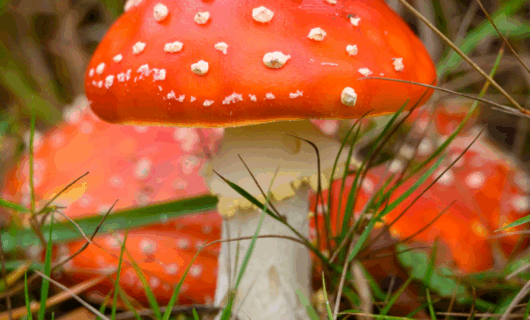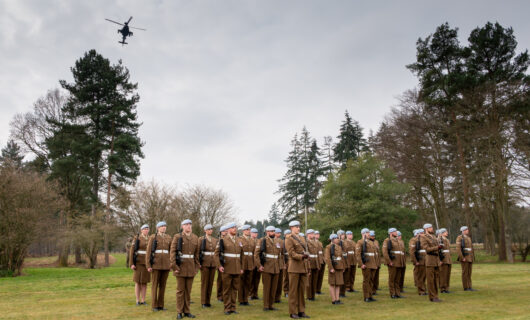Horticulturalist’s Guide to Coppicing
Coppicing is an important part of managing a healthy woodland. In this blog Horticulturalist Emma talks all about the importance of coppicing and how it has been implemented to the woodland management scheme at Markshall.
The importance of clearing trees for woodland management
A healthy woodland is maintained by new generations of trees, replacing older ones when they reach the end of their natural life. Young trees take advantage of gaps created in a woodland, in order to absorb the sunlight they require to grow. Clearing areas ensure that the next generation of trees are able to thrive and adds resilience to a woodland.
Other benefits of woodland clearing include:
Increasing the variety of aged trees and ‘stools’ in the woodland creates a variety of wildlife habitats and improves biodiversity;
Allowing light to reach the woodland floor encourages growth of woodland flowers, such as primroses, bluebells, etc. In turn, flowering plants and grasses provide food for insects, which in turn provide food for other animals such as birds and bats;
Provides a source of timber for garden structures, hedge laying, etc;
Coppicing can rejuvenate a tree and encourage it to live for hundreds of years (e.g. an un-coppiced hazel tree will only live for about 80 years).
What is coppicing?
One method of clearing trees is coppicing. Coppicing is the harvesting of timber by felling trees at their base to create a ‘stool’, from which new shoots will grow. A coppiced tree is recognised by the many thin trunks, or ‘poles’, at its base. Also notably, a coppiced tree will not reach its natural height, e.g. a coppiced hazel will reach approximately 3m (or 7m if left uncut).
Coppicing is done on rotation: small areas of a woodland, called coupes or cants, are cleared each year in succession, leaving areas not being felled to grow on. Hazel is usually coppiced on a 7 year cycle, while chestnut has a cycle of 15-20 years.
The best time to coppice (hazel in this instance) is after autumn lead drop when the sap has gone down, and before the sap rises in the spring.
The basic procedure for coppicing is as follows:
Clear out leaves and debris around the base of the stool.
Cut and clear away any dead or dying stems.
Progressively cut each stem starting with the most accessible sections and working in to the centre of the stool. That cut should be made about 2.5cm above where the branch grows out of the stool. That cut should be angled with the lowest point facing outwards from the centre of the stool.
In some cases, it may be necessary tp make a first cut higher and then trim back as above.
Coppicing ensures a continual (sustainable) supply of material for wood products without the need for clear felling and replanting. Most native broadleaved tree species can be coppiced: hazel, oak, sweet chestnut, ash, field maple and hornbeam are usually coppiced in the UK. Traditionally, chestnut has been used for fencing, whereas hazel is more likely to have been used for thatching, hedge-laying and hurdle making. Hornbeam was used for charcoal making.
Visitors to Markshall will find the poles from our hazel coppice being used to build a variety of structures in the Walled Gardens: from wigwams to support the sweetpeas, to shelters to protect the tender plants over winter, to A-frames to grow climbing vegetables. Eagle-eyed visitors will also spot hazel poles supporting the bunting outside the Orchard Kitchen Café!
Interesting facts:
Coppicing is a traditional woodland management technique that dates back to the Stone Age.
Coppicing provides habitats for endangered or declining species. Dormice depends on a dense understory created by coppicing. Dormice are naturally arboreal, i.e. ‘tree-living’, and the understory provides them not just with food and shelter, but also a safe way to travel through woodland without setting foot on the ground.
Coppicing at Markshall
To improve our woodland management and biodiversity, we are planting several new hazel coppices around Markshall. On 14 November, volunteers from Essex County Council helped the Arboretum and Horticulture Teams’ plant more than 2,000 hazel whips (a whip is an unbranched young tree seedlings, about 0.5-1.0m in height). These new plantings will be protected by biodegradable tree guards, and a mulch layer to protect them over winter. They will take 7-10 years to establish, before the coppicing process begins.
Below is some photos taken on 14 November you can also read about the day here.
More from the blog
See more
-

Make the Most of Colour at Markshall
Autumn is the season when Markshall truly comes alive. As leaves turn golden, amber, and crimson, every corner of the […]
-

Updates from the Walled Garden in Spring
What can be discovered in the Walled Garden at Markshall this Spring? Our Walled Garden is home to a stunning […]
-

Commemorating the 80th Anniversary of Operation Varsity
What was Operation Varsity? Operation Varsity was the codename for the largest single airborne operation conducted on a single day […]